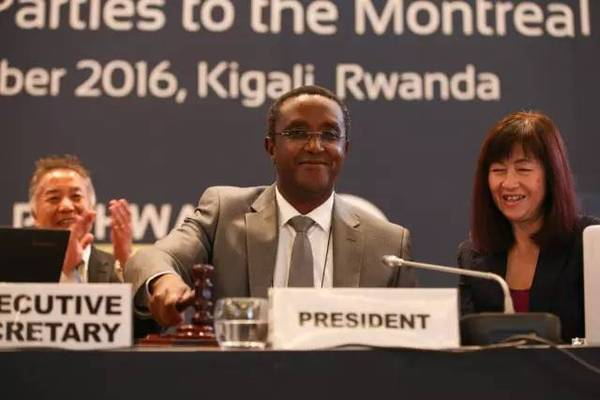Global agreement to curb the effectiveness of greenhouse gas hydrogen fluoride

Since the Paris agreement, countries to achieve new breakthroughs, to curb the effectiveness of greenhouse gas hydrogen fluoride reached a consensus.
The Kigali amendment is expected to reduce 88% of HFCs emissions, which can prevent the end of the century global warming of 0.5 degrees C, while continuing to protect the ozone layer.
Developed countries will take the lead from 2019, to reduce the use of hydrogen fluoride carbide, developing countries are divided into two groups, will be frozen in 2024 or before the use of the year, and then gradually began to reduce the number of.
In October 15, 2016, nearly 200 countries signed a landmark agreement to reduce greenhouse gas emissions of hydrogen fluoride (HFCs), so as to prevent global warming by the end of this century, 0.5 degrees celsius.
In Kigali through the "on the Montreal protocol on substances that Deplete the ozone layer" amendment is so far to promote the realization of the Paris climate conference last year agreed "to the end of this century will be the global temperature rise of 2 degrees Celsius. The goal of the maximum contribution.
"Last year in Paris, we promised to work together to protect the world from the disastrous effects of climate change. Today, we are fulfilling this promise." Eric, executive director of the United Nations Environment Programme, said: Mr. Solheim.
"It's not just about the ozone layer and hydrofluorocarbons, more important is, now, the leaders clearly show that the momentum of green transformation of the Paris climate conference advocated unstoppable and irreversible, our future depends on investment in clean technology, clean and efficient technology is the most sensible choice."
Hydrogen fluoride (HFCs) is used as a substitute for ozone depleting substances (ODS), which is widely used in refrigerators and air conditioners. It is the world's fastest growing greenhouse gas emissions are increasing at an annual rate of 10%. It does not damage the ozone layer, but it plays an important role in the process of global warming, the power is the same as "greenhouse gases" of carbon dioxide.
The Rwandan president Paul Kagame said: "to carry out effective action sooner, we need to pay the cost less, and environmental risk our descendants bear less."
"The conference sends a clear signal that change is coming. It will not be long before innovative technologies and products will enable us to phase out faster and faster elimination of hydrogen fluoride.
In recent years, air temperature record highs, the reliance on air-conditioning, cooling system has also led to rapid growth of grow with each passing day, and emissions of hfcs. This phenomenon is particularly prominent in some developing countries, the middle class continues to grow, and the more inflammation of the hot climate, which indirectly boost the use of hydrogen fluoride. Considering this, the Kigali amendment allows countries to suffer from high temperature heat wave weather slowed down step by step, step by step out of the production and consumption of hydrogen fluoride.
U.S. Secretary of state John Kri said: each country has its own national conditions need to be considered, can not take the one size fits all approach to all countries issued a unified index. It is to allow each country to set different goals at different times, and ultimately achieve the goal of controlling heating up to 0.5 degrees celsius. If we keep the environmental risks of each country in mind, we will accelerate the pace of transition to a clean energy economy.
By 2040, all countries are expected to consume no more than their benchmark 15-20%.
The HFCs alternatives currently under study need to include the following characteristics: 1) with very low ozone depletion potential (ODP); 2) with very low global warming potential (GWP). Natural refrigerant ammonia or carbon dioxide, as well as the development of efficient, low-cost cooling technology, the impact on the environment are smaller. We need to protect our climate by reducing the emission of hydrogen fluoride and improving energy efficiency.
In addition to this decision, in October reached two other milestones. First, the United Nations International Civil Aviation Organization to reduce carbon emissions in international flights reached an agreement. With the addition of 72 parties of global greenhouse gas emissions about 56% of the total emissions approved the "Paris agreement", "Paris agreement" will be held in Morocco in November 7th twenty-second Marrakech United Nations climate change conference before the formal entry into force.





 Mobile website qr code
Mobile website qr code WeChat qr code
WeChat qr code